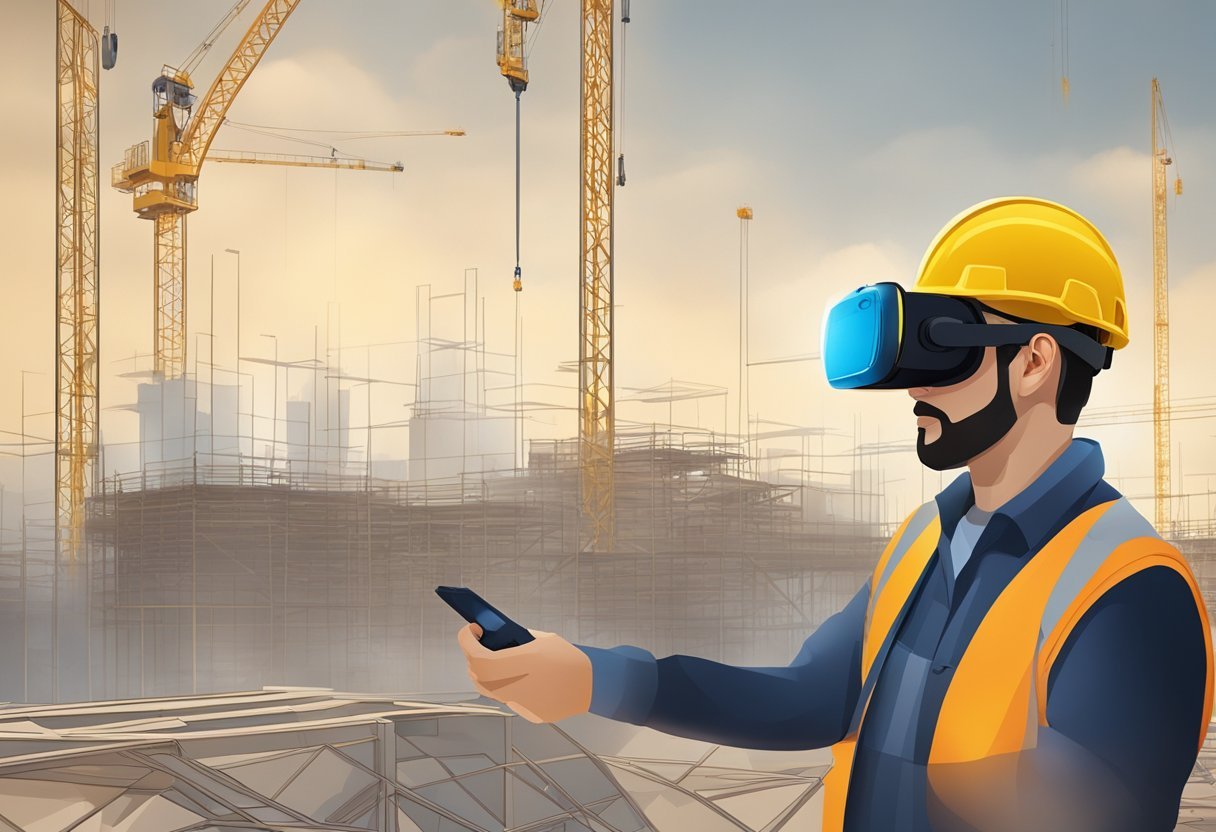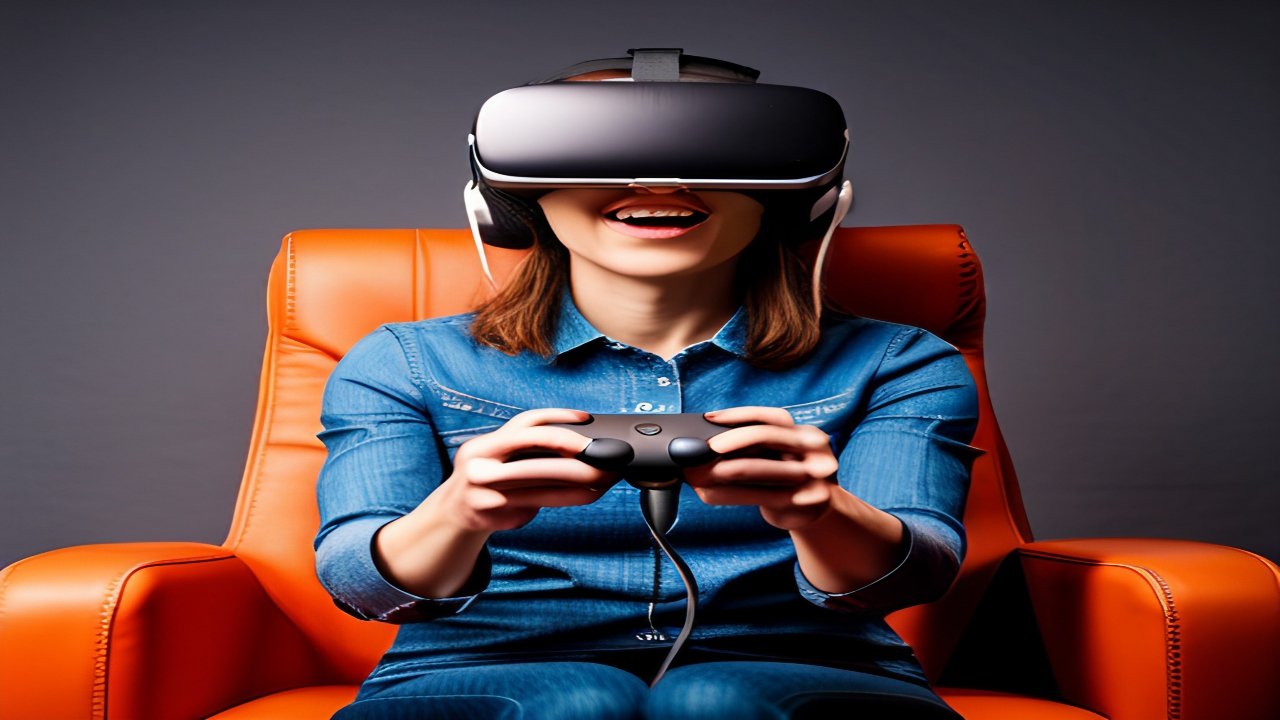Virtual reality (VR) technology has been making waves in various industries, and the construction industry is no exception. VR allows construction professionals to create 3D models of proposed construction projects, which can be used for design, planning, and execution stages. VR technology can enhance collaboration and efficiency, improve safety training, and reduce costs. In this blog post, I will share with you the benefits of using vr for construction and how Virtual Reality can improve you workflow.
Fundamentals of VR in construction include using Navisworks, Revit, BIM files, and other software to perform walkthroughs of 3D models. Implementation and equipment are critical factors to consider when incorporating VR into your construction projects. VR can be used in various applications in construction, such as design, planning, execution, and safety training. However, there are challenges and considerations to keep in mind, such as cost, equipment, and training requirements.
Role of VR in Construction
Virtual reality (VR) is a technology that can revolutionize all aspects of the construction industry, including construction planning. It can allow professionals from different disciplines to experience a virtual building in 3D and interact with different structural elements without having to construct the physical prototype or model.
How VR Works for Construction
VR technology works by creating a simulated environment that can be explored by the user. In construction, VR can be used to create 3D models of buildings and structures, which can then be explored by architects, engineers, and construction workers. These 3D models can be used to identify potential issues and optimize the construction process.
VR technology can also be used to create an immersive experience for construction workers. By using VR headsets, workers can experience a virtual construction site in real-time, allowing them to identify potential hazards and plan for logistics and resources, such as equipment and materials.
The Intersection of VR and Construction
The integration of VR technology and construction has many applications within the architecture, engineering, and construction (AEC) industries. VR can help project managers visualize the construction site and plan for logistics and resources. It can also be used to simulate and test different construction scenarios, helping to identify potential issues and optimize the construction process.
VR technology has the potential to revolutionize the construction industry by providing a more immersive and interactive experience for construction workers and professionals. By using VR technology, construction companies can save time and money by identifying potential issues before construction begins, ultimately leading to a more efficient and cost-effective construction process.
Implementation and Equipment
When implementing VR technology into your construction projects, it’s important to consider the equipment you’ll be using. Selecting the right VR hardware, integrating VR software solutions, and setting up for VR implementation are all crucial steps in the process.
Selecting the Right VR Hardware
Choosing the right VR headset is an essential part of your VR implementation. There are several factors to consider when selecting the right hardware for your project, including cost, resolution, and compatibility with your software solutions. Some popular VR headsets used in the construction industry include the Oculus Quest 2, HTC Vive, and Microsoft HoloLens.
Integrating VR Software Solutions
Integrating VR software solutions into your workflow can help streamline your construction processes and improve collaboration between team members. Some popular VR software solutions used in the construction industry include Unity, SketchUp, and Revit. It’s important to choose software that is compatible with your hardware and meets the specific needs of your project.
Setting Up for VR Implementation
Setting up for VR implementation involves configuring your hardware and software solutions to work together seamlessly. This may involve setting up a dedicated VR workspace, installing necessary software and drivers, and ensuring that all hardware components are properly connected and calibrated. It’s important to follow manufacturer guidelines and best practices to ensure a smooth and successful implementation.
Applications in Construction
Virtual reality (VR) is revolutionizing the construction industry in many ways. Here are some of the most significant applications of VR in construction:
Design and Visualization
VR technology enables construction professionals to create 3D models of proposed construction projects. These models can be explored and interacted with in a virtual environment, allowing stakeholders to visualize the project before it is built. This can help identify potential design flaws or conflicts before construction begins, saving time and money in the long run.
Training and Safety
VR can also be used for virtual reality safety training. Construction workers can be trained in a safe, controlled environment, reducing the risk of accidents and injuries on the job site. This can also save time and money by reducing the need for on-site training and allowing workers to become proficient in their tasks before they start work.
Project Planning and Inspection
VR can aid in project planning and inspection. Construction professionals can use VR to simulate the construction process and identify potential issues before construction begins. This can help ensure that the project is completed on time and within budget. In addition, VR can be used for remote inspection of construction sites. This can save time and money by allowing inspectors to view the site without having to travel to the location.
VR technology has many applications in the construction industry, from design and visualization to training and safety to project planning and inspection. By leveraging the power of VR, construction professionals can improve efficiency, reduce costs, and enhance safety on the job site.
Enhancing Collaboration and Efficiency
Virtual Reality (VR) technology is transforming the construction industry by optimizing efficiency, improving collaboration, and reducing costs. VR simulations provide immersive training environments to increase safety awareness and reduce accidents. In this section, we will explore how VR can enhance collaboration and efficiency in construction projects.
Improving Team Coordination
Collaboration has always been a cornerstone of successful construction projects. VR technology can improve team coordination by allowing team members to visualize and interact with a 3D model of the project. This can help identify potential issues before construction begins, reducing rework and costs. VR can also help teams collaborate remotely, allowing stakeholders from different locations to work together in real-time.
Streamlining Client Interactions
VR technology can also streamline client interactions by allowing clients to experience the project in a virtual environment. This can help clients better understand the project and make more informed decisions. VR can also help clients visualize different design options, reducing the need for costly redesigns. By involving clients in the design process, VR can help ensure that the final product meets their expectations.
Reducing Rework and Costs
VR technology can help reduce rework and costs by allowing teams to identify potential issues before construction begins. By visualizing the project in a virtual environment, teams can identify design flaws, clashes, and other issues that may not be apparent in 2D plans. This can help reduce the need for costly redesigns and rework. VR can also help teams optimize construction processes, reducing labor costs and improving project efficiency.
VR technology can enhance collaboration and efficiency in construction projects by improving team coordination, streamlining client interactions, and reducing rework and costs. By leveraging VR technology, construction teams can improve project outcomes and deliver projects on time and within budget.
Challenges and Considerations
As with any new technology, there are certain technological hurdles that must be addressed when implementing VR in construction. One of the biggest challenges is ensuring that the VR technology is compatible with existing software and hardware systems. This can require significant investment in new equipment and software, which can be a barrier for some companies with limited budgets.
Another challenge is ensuring that VR technology is user-friendly and easy to operate. This requires training employees on how to use the technology effectively and efficiently. It is also important to consider the potential impact of VR on worker safety, as the technology can be disorienting and may require workers to wear additional equipment.
Managing Costs and ROI
Another consideration when implementing VR in construction is managing costs and ensuring a positive return on investment (ROI). While VR technology can help identify potential design flaws and improve communication among stakeholders, it can also be expensive to implement.
One way to manage costs is to start small and gradually scale up as the technology proves its value. It is also important to consider the long-term benefits of VR, such as improved productivity and reduced risk of costly errors.
Navigating the Future of Construction
Finally, it is important to consider the future of construction and how VR technology fits into this evolving landscape. As the industry becomes increasingly digital and data-driven, VR technology can help companies stay competitive by providing a more immersive and interactive experience for stakeholders.
However, it is also important to consider the potential risks associated with new technology, such as data security and privacy concerns. As such, it is important to stay up-to-date on the latest trends and best practices in VR implementation to ensure a successful and sustainable future for the industry.
Frequently Asked Questions
How is virtual reality utilized in construction projects?
Virtual reality (VR) is utilized in construction projects to create 3D models of proposed construction projects, allowing stakeholders to explore and interact with the design in a virtual environment. This technology is used in the design and planning stages of a project, where it can help to visualize a building before it is built. VR technology can also be used to provide virtual tours of a building before construction is complete.
How much does a VR construction cost?
The cost of VR construction can vary depending on the complexity of the project. Generally, the cost of VR construction ranges from a few thousand dollars to tens of thousands of dollars. However, the cost of VR construction is decreasing as the technology becomes more widely available and easier to use.
What is VR in BIM?
VR in BIM (Building Information Modeling) is a technology that allows architects, engineers, and construction professionals to create 3D models of buildings and other structures. It is used to simulate the construction process and provide a virtual representation of the building or structure. This technology can be used to identify and resolve design issues before construction begins, saving time and money.
How much does a normal VR cost?
The cost of a normal VR system can vary depending on the quality and features of the system. Generally, a high-quality VR system can cost between $500 and $4000. However, there are less expensive options available that can be used for basic VR applications.
How VR is changing construction industry?
VR is changing the construction industry by allowing professionals to visualize and interact with building designs in a virtual environment. This technology can help to identify design issues before construction begins, saving time and money. It can also be used to provide virtual tours of buildings before construction is complete, allowing stakeholders to experience the building before it is built.
How is VR used in civil engineering?
VR is used in civil engineering to create 3D models of proposed construction projects. This technology can help to identify design issues before construction begins, saving time and money. It can also be used to provide virtual tours of buildings and other structures before construction is complete. VR can be used to simulate the construction process, allowing engineers to identify and resolve potential issues before construction begins.




